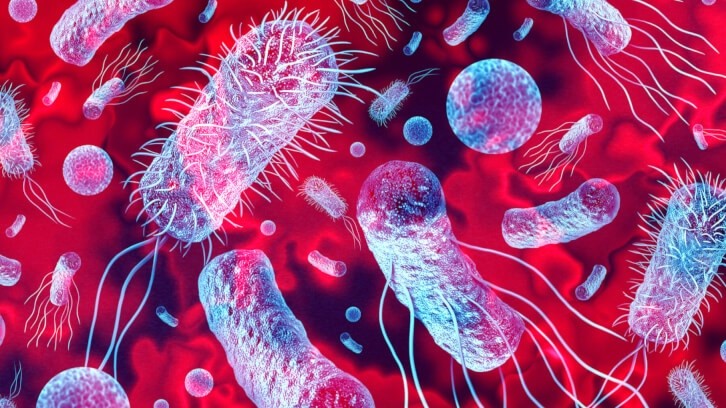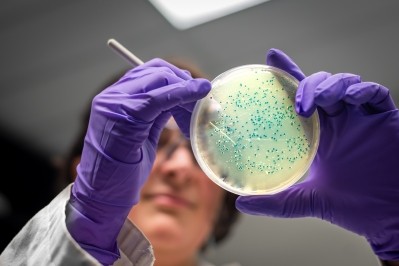Short read
‘Shocking’ proposals to EU Listeria regs revealed

Whilst not all concerns came to fruition, namely the introduction of challenge testing to set shelf life, the Chilled Food Association’s director general Karin Goodburn, believes the amendments set out in the draft paper could still be detrimental to food safety.
The consultation over Regulation (EC) 2073/2005 has arisen as a result of rising Listeria-related outbreaks in the EU. In its latest report on zoonoses, the European Food Safety Authority observed that the number of cases of listeriosis in humans in the EU was 15.9% higher in 2022 than in 2021. Moreover, the number of deaths from foodborne outbreaks caused by Listeria monocytogenes in the EU in 2022 was one of the highest numbers ever reported to the Authority in the last decade.
Yet, according to UK Government data, the Listeriosis rate in the UK and Ireland (UK&I) is half that of the EU. Goodburn explained this is owned to the UK&I’s way of managing contamination, including Listeria – namely Good Hygienic Practice and HACCP protocols, including supplier quality assurance measures.
She described it as a ‘proactive’ method, whereby the sector collects data (such as swabs) to identify issues and demonstrate control. Shelf life is then set based on a food’s physicochemical properties, combined with shelf life data using a stream of food and environmental data.
Meanwhile, countries in the EU undertake a ‘worse case scenario’ approach, conducting tests particularly on foods that enter their country. If any Listeria monocytogenes is detected, it’ll result in a mass recall which Goodburn explains can be unnecessary.
Current regulation
Change in regulations proposed with comment deadline 2300h (UK) 8 May:
Ready to eat food criterion where growth of Lm is supported | Current EU Reg says | Proposed amendment |
1.2a generally applicable limit | 100 cfu/g throughout life | 100 cfu/g throughout life |
1.2b applies when authorities do not believe the producer has shelf life data/proof | Not detected in 25g at the point of leaving the immediate control of the producer | Not detected in 25g throughout shelf life |
If proposals do go ahead, they’re expected to be introduced by 1 January 2026.
To understand this, it’s important to look at the current rules for ready-to-eat foods able to support the growth of Listeria monocytogenes (also set out in the above table) other than those intended for infants and for special medical purposes. Right now, where a food business operator cannot demonstrate the product will not exceed 100/g during shelf life the authorities can require that Listeria monocytogenes is not detected in a 25g sample of the food before they have left the immediate control of the producing food business operator.
As Goodburn previously told Food Manufacture: “Not detecting Listeria in a 25g sample does not guarantee absence in a whole batch, and if Listeria is detected in a 25g sample, it does not imply that the whole batch is contaminated.”
Speaking with her more recently, she added: “Given tonnes of food may be produced by a site, a test sample is a tiny percentage – it tells you nothing on its own unless you have a stream of data.”
Instead, she believes proper food safety assurance relies on proactive implementation of best practice standards supported by concerted monitoring and prompt corrective actions.
What changes to Regulation (EC) 2073/2005 have been proposed?
The proposed change to the regulation would mean that zero tolerance would be placed on Listeria monocytogenes in 25g (i.e. not detected) during the total length of the durability period on the market.
It looks like a tiny change on paper, but what it means is that the onus will be placed entirely on food manufacturers – even if they are not the source of contamination.
“We would be taking responsibility for the entire distribution chain,” Goodburn emphasised, as she gave the example of the varying temperatures of consumer fridges and an absence of EU legislation around commercial temperature performance – with temperature playing a key role in Listeria growth.
Listeria could also grow in other environments within retail and hospitality, with Goodburn offering a real-life anecdote of a manufacturing butcher who has never swabbed their production or carried out shelf life validation.
“That’s the bit that needs to be focused on,” she stated, as she described hygienic controls within the non-mainstream supply chain as the ‘soft underbelly’ of food safety. “We need to have best practice as standard practice.”
To assure compliance with such limits of non-detection, Goodburn explained that products would have to be either reformulated to kill Listeria monocytogenes (e.g. pH<3.3), which would render many foods unpalatable; or go through in-pack processing (e.g., thermal, HPP, irradiation), which would be of extremely limited applicability without destroying food organoleptic and structure or having low public acceptability of the technology (e.g., irradiation).
Moreover, Goodburn worries that a change to limits could deter food business operations from testing in the first place for fear of finding Listeria monocytogenes.
“In the USA where zero tolerance is law, you end up with massive outbreaks that only really get discovered when a lot of people become ill and/or die. That’s not a food safety system at all.”
We should stick with established best practice written by industry with the Food Standards Agency (FSA) and which is accepted by FSA Ireland, she insisted. “Making sure people do the right thing in the factory” and enforcing that more widely across the supply chain across the globe.
“The law as it is now works when you enforce it.”
So what now?
In 2021, Goodburn set up the Industry Listeria Group, which has produced a technical summary that outlines the consequences of the proposed change and an alternative route going forwards.
It suggests that instead of zero tolerance/not detected in 25g for criterion 1.2b, the current legislation is enforced at all stages of the supply and distribution chain. Failing this, instead of not detected in 25g, a quantitative limit of 10 or 20 cfu/g as defined by EN/ISO 11290-2 throughout shelf life could be introduced. This, the paper reads, ‘would reflect public health protection and sustainability policy needs without disincentivising FBOs from carrying out monitoring testing, reduction in which would result in reduced control’.
Goodburn is now urging businesses to submit comments for the consultation, with a submission in their own words using the text in section 1 of the technical paper the Group has drawn up. This should then be accompanied with the following statement: ‘We support the submission from the Industry Listeria Group’.
You can submit comments to the consultation here, before the 11pm (UK) 8 May deadline, but as Goodburn warned, the process involves a few registration steps and may take some time – so don’t leave it till the eleventh hour.
The final draft of the Industry Listeria Group document will be agreed on 1 May 2024 and submitted thereafter.
In other news, Food Manufacture's latest podcast has just been released - episode three features special guest Nimisha Raja, chief executive of air-dried snack manufacturer Nim's Fruit Crisps. Listen here.
















